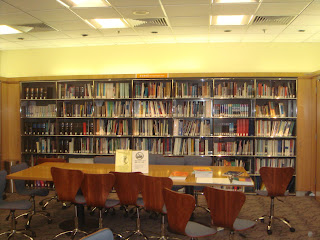 He is 'Da' man!
He is 'Da' man! Here's another one, that's our module and trip tutor, Mr. Wong. Looking like he's the big boss isn't he?
Here's another one, that's our module and trip tutor, Mr. Wong. Looking like he's the big boss isn't he?


Oh, there was another group of NP students travelling with us on the same itinery while we were in China as well, the students are from the School of Engineering.

The Materials South City aims to create an interactive environment that houses thousands of industrial material players. It compromises of 5 main trade centres, each headed by five prominent investors from Carrianna Group, Man Sang Group, Kin Hip Metal and Plastic Factory Ltd, Luk Ka International Ltd and Kings Faith International Pte Ltd. The 5 main trade centres are:
1. Textile and Clothing Materials
2. Leather and Accessories
3. Metals, Chemicals and Plastic Materials
4. Printing, Paper Products and Packaging Materials
5. Electronic Accessories
We were given a close look of the city after a briefing by the manager. We travelled around in mini vehicles such as these:
Other incentives for businesses include rental fee waive for the first two years of business operations in order to encourage more businesses to enter and invest in the China South City.


 These are my groupmates, from left,
These are my groupmates, from left,  After the briefing and the Q and A session, Ms. Cheung showed us around the building and within the building, there are souvenir shops that has set up their operations within the TDC building, where such shops are given special previlages, such has having their tax on porfits being absorbed by the TDC.
After the briefing and the Q and A session, Ms. Cheung showed us around the building and within the building, there are souvenir shops that has set up their operations within the TDC building, where such shops are given special previlages, such has having their tax on porfits being absorbed by the TDC. We were than given a tour of the library and were shown the facilities it has. It is a two-storey library with a wide range of facilities, such as internet login points, printing and photocopying services and a wide range of catalogues for businesses to utilise.
We were than given a tour of the library and were shown the facilities it has. It is a two-storey library with a wide range of facilities, such as internet login points, printing and photocopying services and a wide range of catalogues for businesses to utilise.